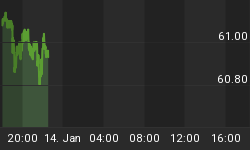Optimism is back again. Decisions taken in the past weeks in the US and Europe could support the S&P 500 index until 1550.
Q3 is on, but for how long?
The Fed launched a third round of quantitative easing (Q3), under which $40 billion of mortgage-backed securities (MBS) will be bought on a monthly basis. Additionally, the Federal Open Market Committee (FOMC) announced it expects the current federal funds rate of 0%-1/4% to be maintained until mid-2015 (forward guidance). The move was anticipated. However, there are some surprises. The program will buy only MBS and no Treasuries for now. Secondly, it should expire with Operation Twist by the end of 2012. The Fed made it clear it will be renewed, if the labor market does not improve tangibly. Will it work? Yes, it should help the unemployment rate to decline below 8.0% again. The study of cycles anticipates a fall to 7.8%-7.5%, before unemployment could increase again for the final third wave.
The Fed's decision will support metals and stocks. Inflation should rise as well. Gold is meeting a strong resistance at 1800, which corresponds to a few long-term trend lines. Nevertheless, the risk-reward ratio remains positive. Funds are still underinvested in the market, according to the latest Commitment of Traders (COT) report. Seasonally, the last part of the year supports a rise in gold. A move above 1820 would possibly target 1900-2020. The S&P 500 index has instead moved above the higher channel line of the past four years. The next target could be 1550. October, November, and December are the best three months for stocks.

The worst might be over for Europe
The dollar should continue to decline against the majors. As an example, the US Dollar index remains overvalued. Funds have just begun selling the greenback. The euro is meeting a good resistance at 1.32/34. A move above 1.3480 would eventually set the price to rise to 1.44. Draghi's decision to buy sovereign debt securities in the secondary market (1-3 year maturities) without any quantity or time restrictions has gained a conditional support from Germany's Federal Constitutional. This will reassure the markets about the European Central Bank's (ECB) capability to buy large numbers of bonds, such as those of Italy and Spain, if required. Higher inflation and a weaker euro (in a few more years) will take pressure away from the weaker nations and stabilize the European Union.
It is true, Germany does not want higher prices. Nevertheless, the long-term decline of interest rates that started in the 80's is set to end. According to the study of cycles, declines in long-term interest rates have continued for 25/27 years from top to bottom (1873/1900, 1920/1945). Consolidations at the bottom lasted for a maximum of nine years. Since 1954, Fed Funds have increased roughly every 4/5 years bottom to bottom (58/62/67/72/77/81/87/93/99/04/09). The longest period of decline was five years (1989/1994). The question is, how do these numbers fit in today's scenario. Interest rates started to decline around 1982 and have been moving sideways since the second part of 2000. As a result, a new increase could be expected 2013/14, if history repeats itself.
















